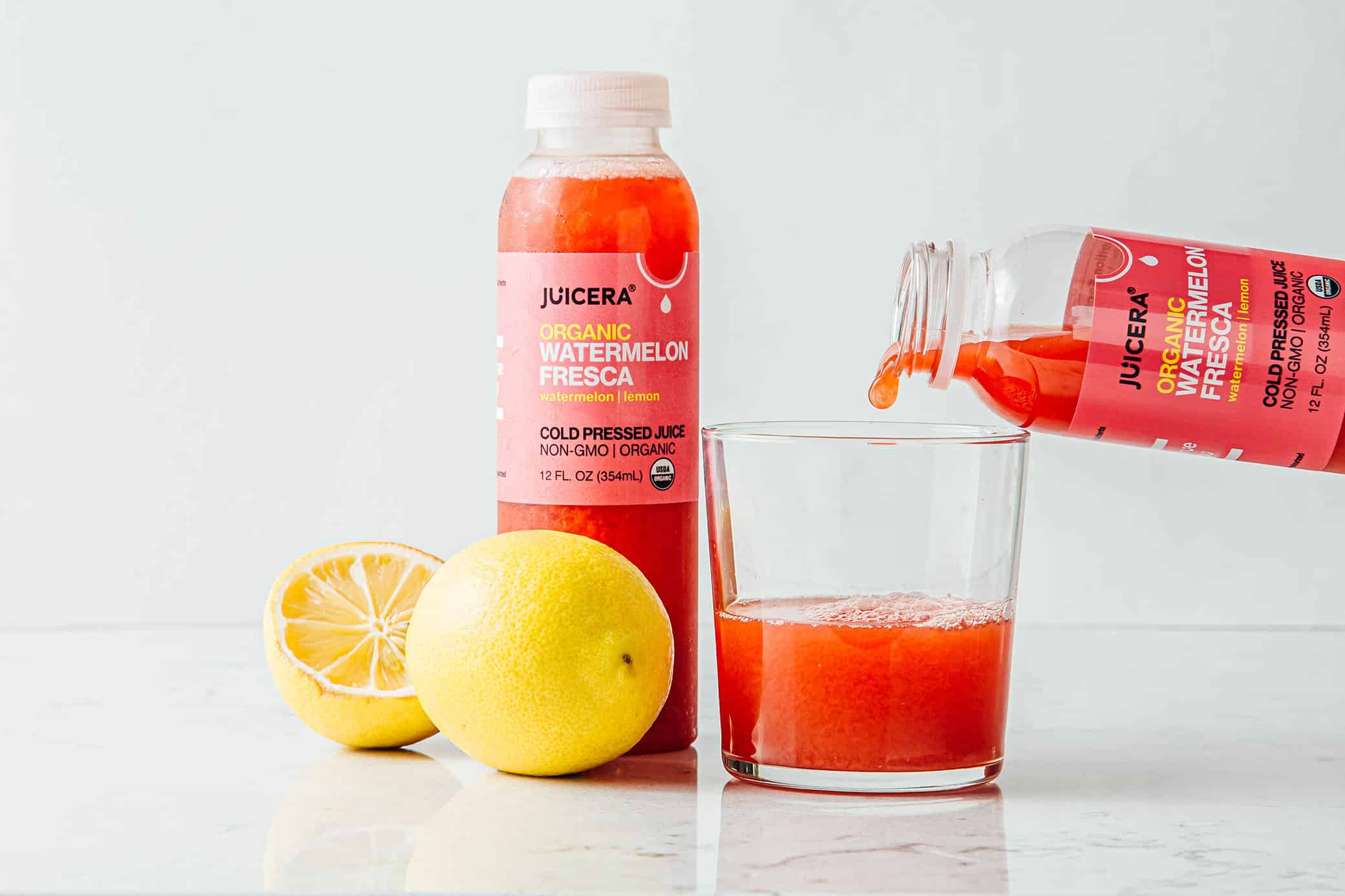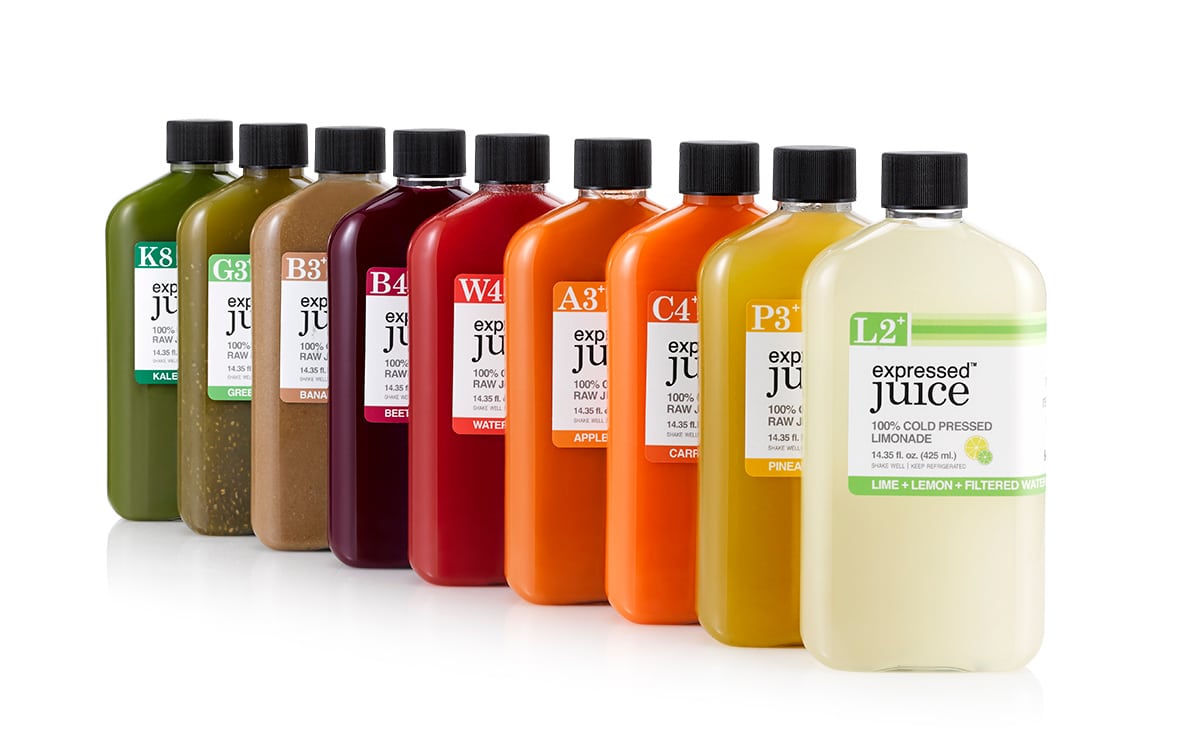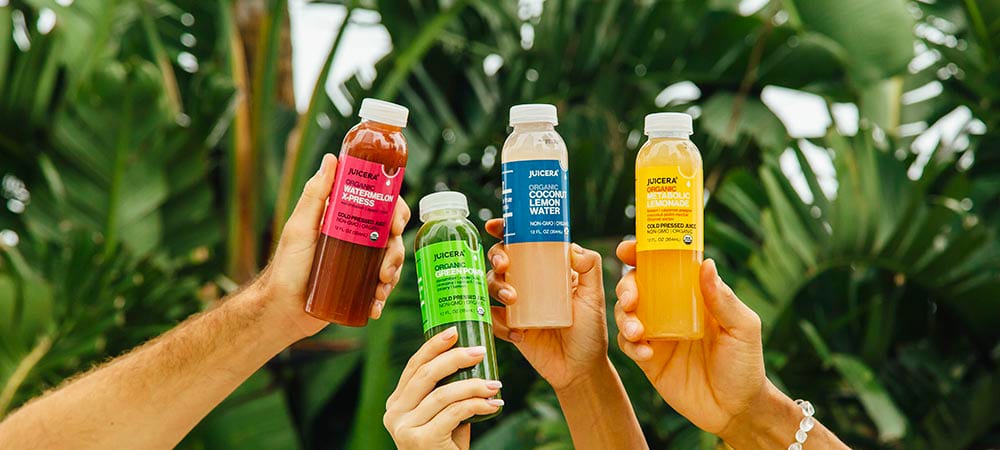If you have a passion for making your own juice, you might be thinking about how to start your own juice business!
Starting a juice business is an exciting venture, offering creative opportunities and the potential for high profit margins for those passionate about healthy beverages.
You might be wondering, ‘how much do i need to open up juice business?‘ or what if I don’t have any experience starting a business (check out our podcast).
Many successful beverage businesses started small, with just a passion for health and a drive to be an entrepreneur.
But starting a juice business that actually lasts and thrives isn’t as easy as just loving juice—it takes dedication, planning, and strategy.
Read on to find out how to start your own juice business the right way, so you can last, grow, and share your juice with the world!
Step 1: Decide What Kind of Juice Business You Want
Do you want to sell juice out of your home to start? Do you plan to open up a juice bar or truck? Or do you want to partner with vendors right away?
Launching a juicing business can be an exciting step for any new business owner looking to enter the health and wellness industry. There’s no wrong answer to what kind of juice business to run, but it’s important to get clear on your goals. The juice business, in particular, is a competitive space so it is important to understand your competition and how you will differentiate your juice brand from others
Your vision will shape every business decision you make (from equipment to packaging to marketing!).
Step 2: Create a business plan
A strong business plan is the foundation of any successful juice business. Before you start squeezing your first orange or blending your first green juice, take the time to map out your vision and strategy. Begin by researching your target market—think about who will be most interested in your juices, such as health conscious consumers, busy professionals, or fitness enthusiasts. Understanding your audience will help you tailor your offerings and marketing strategies to attract loyal customers.
Your business plan should also detail your startup costs, including everything from commercial juicers and blenders to fresh produce, packaging, and rent for your juice bar or production space. Don’t forget to factor in expenses for permits, licenses, and compliance with local health and safety regulations. Outline your projected revenue, profit margins, and break-even point to ensure your juice business is financially viable.
In addition, develop a clear marketing strategy to generate buzz and drive sales. Consider how you’ll promote your juice bar, juice truck, or online store—whether through social media, partnerships with local businesses, or special events. Plan your business operations carefully, including sourcing high-quality fresh produce, managing inventory, and maintaining strict safety regulations to protect your customers and your reputation.
Putting together a solid business plan is one of the best ways to set your juice business up for success. It gives you direction, keeps you focused, and helps you stand out in the competitive food and beverage industry.
Step 3: Get Clear on the Laws for Your Juice Business
Before you start your own juice business, you’ll need to understand the laws. It’s crucial to research and comply with all relevant local laws, as regulations can vary significantly by region. Some areas have “cottage laws” that allow you to operate your business out of your house as long as you’re directly selling to customers. Other areas don’t have these permissions in place.
Some states will require a business license. Others might even require a sales tax permit. In addition, you will likely need to obtain health permits for food and beverage operations, such as food handler permits or food enterprise licenses, to ensure compliance with health and safety regulations. If you plan to sell raw juice, be aware that there may be special regulations regarding its production and sale, including requirements for pasteurization or restrictions on direct-to-consumer sales. The process for applying for licenses varies by state. Nav has an excellent guide on resources and requirements for each state.
You’ll also need to decide on your business’s legal structure. You can choose to start a sole proprietorship or a general partnership, which likely comes at the lowest cost. Often, you can start by just applying for an EIN (your federal tax ID number) and a DBA (or doing business as) if you want to run your business under a name other than your own.
However, with a sole proprietorship or general partnership, you won’t have liability protection (meaning that if the juice business gets sued, your personal assets are on the line).
Alternatively, you can set up your juice business as an LLC, or a limited liability corporation. Under an LLC, your business is separate from you as a person, so your assets are protected.
There are other options as well—including a C Corp and an S Corp. These options offer tax benefits but come at a higher cost.
When you’re just starting out, you’ll likely want to form an LLC or a sole proprietorship. You can always change your business structure somewhere down the line.
Whatever route you take, you’ll need to keep up with the legalities surrounding your business requirements. You don’t want to find yourself in legal trouble just when your juice business starts taking off!
Step 4: Create Your Recipes
One of the most fun steps in creating your juice business will be determining your recipes. This is where you’ll get to experiment and figure out what works for you and your business. Try experimenting with certain fruits to create unique flavors that set your offerings apart.
You’ll also want to enlist friends and family for taste tests. Pay attention to what flavors they appreciate the most and any feedback they offer on your product. Using fresh fruits is essential for achieving the best taste and ensuring your juices are high quality.
It might be tempting to produce a wide range of recipes, but it’s probably wiser to choose a small handful of your very best recipes. That way, you can perfect your recipes and focus on what makes your business great. Highlighting your unique fruit juice recipes can help your business stand out in a competitive market.
Don’t forget to highlight the health benefits of your juice recipes—lots of customers are on the lookout for nutritious options that align with their wellness goals.

Step 5: Determine Your Niche
Once you know what you’re doing with your business, it’s time to figure out what is going to make your juice business stand out.
There are thousands of other juice options out there. You need to figure out what distinguishes yours.
Will your juice be cold-pressed? Are you only going to use organic ingredients? Do you have a special process or an unusual ingredient you use?
You’ll want to spend some time researching your competitors. Pay attention to the language they use, their branding elements, and where they are putting their marketing efforts. If you are thinking of having cold pressed juice business consider how you can position yourself to offer your audience something that is different. Highlighting your expertise in juicing techniques can set you apart and attract those interested in high-quality drinks.
Getting clear on what you want out of your business will help you determine who your target market is, how to position yourself in the market, and how to move your business forward. .
By focusing on your niche, you can build a strong customer base that values what makes your juice business unique.
Step 6: Plan Your Logo, Packaging, and Branding

After you determine your niche, you’ll be ready to create the branding. Great branding helps your juice stand out, resonates with your customers, and positions your juice as a desirable product.
Remember that every aspect of your branding—your logo, brand colors, tagline, packaging copy, and more—should reflect your niche and your unique selling proposition (your differentiator). Also, keep in mind that every element needs to resonate with your audience. Understanding your target market can help you design packaging that appeals directly to your target audience and increases your product’s chances of success.
Your logo and packaging serve as a mini-billboard for your product. When people have endless juice options, you need to capture attention quickly. How will you draw customers in and stand out from other competitors? Will you do this through bold typography or vibrant colors?
The branding elements should communicate what you do, who you do it for, and why you do it better than anyone else. Think about any imagery that reflects your brand’s story and values and try to incorporate that into the logo and packaging.
Use your tagline and packaging copy to engage customers and provide an idea of what to expect with your juice.
You’ll also need to incorporate nutrition facts into your packaging, along with adding barcodes. When creating your packaging, it’s important to manage packaging costs as part of your overall expenses. Tracking packaging costs alongside ingredients, labor, and overhead helps ensure your product remains profitable.
If you work with a reliable branding agency or a designer, they can help guide you through these steps and create a cohesive brand image with your brand elements.
Step 7: Shop for the Right Equipment
If you’re going to make your own juice, finding the right equipment is a crucial step. At the very least, you’ll need to invest in a commercial juicer. You’ll also need essential juice bar equipment like blenders, refrigerators, and other specialized tools to get your business up and running.
You want a juicer that’s durable and reliable. You’ll also need to make sure it’s NSF certified in order to comply with the law and public health standards. A cold press juicer is a great choice if you’re aiming for a premium product—it helps you get higher-quality juice while preserving more of the nutrients your customers care about.
Along with a reliable juicer, make sure you have quality essentials like sharp knives, sturdy cutting boards, and a scale to accurately measure your fruits and veggies. A dedicated refrigerator is also a must for keeping produce fresh.
Sourcing fresh, high-quality ingredients and managing your raw materials well is key to maintaining consistency and efficiency.
If you’re thinking about growing your business into a full-scale juice operation, it’s smart to invest in the right equipment from the beginning—it sets the stage for smooth scaling later on.
Step 8: Find a Manufacturer/Co-packer
Not everyone chooses to make their juice themselves, though. You can also choose to work with a juice manufacturer—a third party who creates the juice for you. Manufacturers can help produce a variety of fruit juices, allowing you to offer different flavors and meet market demand. Unless you choose to make your juice at home, you’ll probably want to find a co-packer. Co-packers make the product and package it for you.
There are many advantages to working with a manufacturer. They will understand the legalities and compliances surrounding your business and help ensure that you’re following the guidelines.
Your co-packer will be able to guide you through regulations and help you ensure that you’re following compliance.
The Specialty Food Association can help you locate the right co-packer for your juice business. (They also offer plenty of free resources to help you get started with your business in general!)
You’ll also need to work with your co-packer to ensure that your labels follow all USDA guidelines. For example, you can’t say that your juice is organic unless you’ve undergone an inspection and certification through the USDA.
Online directories, such as ThomasNet, MFG, and Zycon, can also help you locate a manufacturer or you can check out our free guide to scaling up your business includes tips and resources (including co-packer and trade show lists). Grab your guide and start growing!
Even if you opt to make your juice yourself at first, you should consider outsourcing to a manufacturer whenever your business allows. It’s the best way to keep up with production so that you can partner with vendors and start scaling your business. Co-packers often support small businesses looking to scale up, providing solutions tailored to their needs.
Step 9: Decide Where to Sell Your Juice
Having your production in place is a big piece of starting your juice business. But you’ll also need to figure out where and how you’re going to sell your product.
At first, you might be selling from home or at farmer’s markets or even selling online. That’s a great place to start, but as you grow, you’ll probably want to expand. Selling wholesale in restaurants, cafes, or specialty foods shops (like Milam’s in Miami) will help you scale your business and reach more customers. Consider targeting high-traffic locations such as office buildings to attract customers and boost your sales.
Eventually, you can reach out to larger wholesale distributors or connect with corporate offices to get your product into grocery stores, chain restaurants, and hotels. To generate sales and attract customers, develop promotional strategies and offer samples or special deals to new partners.
Contact wholesale juice distributors, like Lively Foods and United Juice of America and see if they’re willing to partner with you. Remember, the more professional your brand appears, the more likely you are to get your brand sold! That means having a quality logo, a solid marketing strategy, and professional designs that reflect your brand image. Be sure to identify your target customers for each sales channel and tailor your approach accordingly.

Step 10: Start Spreading the Word
Remember that successful juice brands don’t spring up overnight. It takes time to grow your brand awareness, make connections, form partnerships, and transform your brand into a success. Building a loyal customer base is important—it keeps people coming back and helps your juice brand grow over time.
Build up a solid web presence with a professional website and social media platforms. Make sure to engage with your customers and generate interest in your brand.
Over time, as more customers come your way and more vendors become interested, your brand will start to grow. Consistency, determination, and constantly putting yourself and your brand out there are key! At Crème de Mint, an award-winning packaging design agency, we’ve partnered with several thriving juice brands, including Juicera and Expressed Juice. We’d love to help you start your juice business. Getting involved with your local community through partnerships and collabs is a great way to grow your brand and build lasting connections.
When you are ready to design your new juice brand, our CPG branding agency would love to help your new brand stand out!



